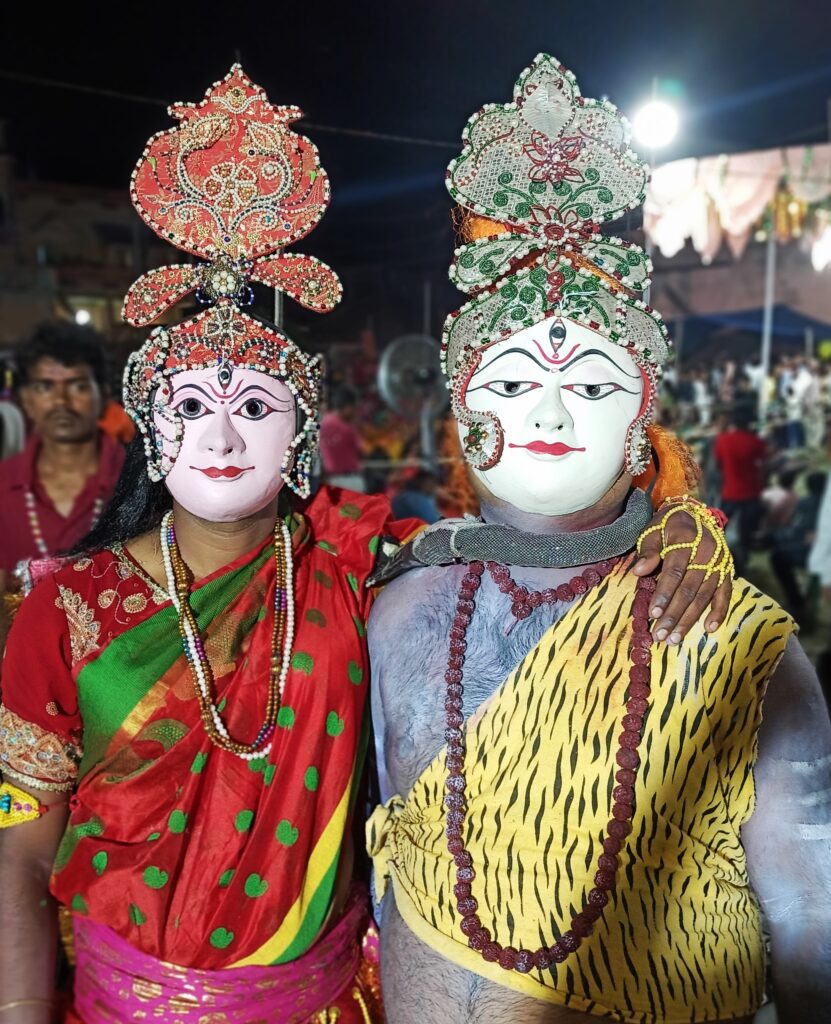The Significance of Snana Yatra
Snana Yatra, also known as the Devasnan Purnima or the Bathing Festival, is a revered Hindu festival celebrated on the full-moon day of the month of Jyestha. This sacred occasion holds profound importance in Hindu tradition, attracting devotees from far and wide to partake in the divine ceremony. It is believed that witnessing the holy sight of Lord Jagannath during this festival absolves one of sins, offering a deeply spiritual experience for pilgrims. The roots of Snana Yatra are deeply embedded in ancient scriptures such as the Skanda Purana, signifying its timeless significance.


The Ceremonial Bathing Ritual
Preceding Snana Yatra, on the eve of the festival, the majestic images of Lord Jagannath, Lord Balabhadra, Goddess Subhadra, and Sudarshana are reverentially carried out from the inner sanctum of the main temple in a grand procession called ‘Pahandi.’ This procession culminates at the Snana Mandapa, a bathing pandal located northeast of Ananda Bazar, adjacent to the outer wall of the temple. The Snana Mandapa, spanning 76 feet in both length and breadth, offers devotees outside the temple a clear and unhindered view of the divine bathing ceremony.
In a ceremonial procession, the Suaras and Mahasuaras, designated priests, fetch 108 pots of water from the Golden well (‘Suna Kua’). This water, drawn only once a year, holds immense sanctity and purity. Throughout the procession, participants cover their mouths with cloth, ensuring the water remains untainted even by their breath. The water pots are then purified with turmeric, rice, sandalwood, flowers, and perfumes by the priests in the Bhoga Mandap. Subsequently, the purified water pots are carried in a long queue to the bathing platform in a ritual known as ‘Jalabhisheka,’ accompanied by Vedic chants, kirtana, and the resounding echoes of conch shells.
Rituals and Customs
Following the ceremonial bathing ritual, as evening descends, the deities adorn a special elephantine form known as ‘Hati Vesha.’ Lord Jagannath and Lord Balabhadra assume the guise of elephants, while Goddess Subhadra embellishes herself with a lotus flower attire.
Post-Snana Yatra, the deities enter a symbolic period of illness known as ‘Anasara.’ During this time, they retreat to a special sick room within the temple called ‘Ratan Vedi.’ The deities abstain from public view for 15 days, during which they are offered only fruits, water mixed with cheese, and Dasamula medicines to cure their symbolic ‘fever.’ The temple’s daily rites remain suspended during this period. The deities are attended to by the Raj Vaidya, the King’s physician, who administers specific medications, including Dasamulas.
The Symbolism of ‘Hati Vesha’
‘Hati Vesha,’ or the elephant attire, donned by Lord Jagannath and Lord Balabhadra during Snana Yatra, carries profound symbolism deeply rooted in Hindu mythology. This unique attire transforms the deities into majestic elephants, symbolizing strength, power, and wisdom. Elephants are revered creatures in Hinduism, often associated with auspiciousness, prosperity, and divine grace.
The elephant form of Lord Jagannath and Lord Balabhadra serves as a visual representation of their divine attributes. Just as elephants are known for their gentle demeanor and protective nature, the ‘Hati Vesha’ symbolizes the protective presence of the deities, ensuring the well-being and safety of their devotees.
Furthermore, the elephant motif holds significance in the context of Lord Ganesha, the beloved elephant-headed deity, who is revered as the remover of obstacles and the patron of intellect and wisdom. By assuming the form of elephants, Lord Jagannath and Lord Balabhadra embody the divine qualities of Lord Ganesha, offering blessings of auspicious beginnings and the removal of hurdles on the spiritual path.
The Tradition of ‘Anasara’
Following the grandeur of Snana Yatra, the tradition of ‘Anasara’ signifies a symbolic period of rest and rejuvenation for the deities. As per tradition, after the ceremonial bath, Lord Jagannath, Lord Balabhadra, Goddess Subhadra, and Sudarshana enter a state of seclusion known as ‘Anasara.’
During ‘Anasara,’ the deities retreat to a secluded chamber within the temple premises known as ‘Ratan Vedi.’ This period typically spans 15 days, during which the deities abstain from public view and remain under the care of the temple priests. It is believed that the deities fall into a state of illness, symbolically depicted as ‘fever,’ necessitating a period of rest and recuperation.
Devotees observe this period with reverence, offering prayers and seeking the blessings of the deities for their well-being. The temple rituals and daily ceremonies are suspended during ‘Anasara,’ signifying a period of introspection and spiritual renewal for both the deities and their devotees.
The tradition of ‘Anasara’ culminates with the ‘Netrotsava’ or the festival of divine vision, wherein the deities emerge from their seclusion in ‘Ratan Vedi’ in their rejuvenated forms. This auspicious occasion marks the resumption of temple rituals and the renewal of divine blessings, ushering in a sense of joy and celebration among devotees.
In essence, the tradition of ‘Anasara’ underscores the cyclical nature of divine presence, symbolizing the eternal bond between the deities and their devotees, and the continuous cycle of spiritual renewal and rejuvenation.
Prathamastami 2023- Celebrating the Eldest’s Journey



Pingback: Hanuman Jayanti 2024: A Simple Solution to Financial Problems -